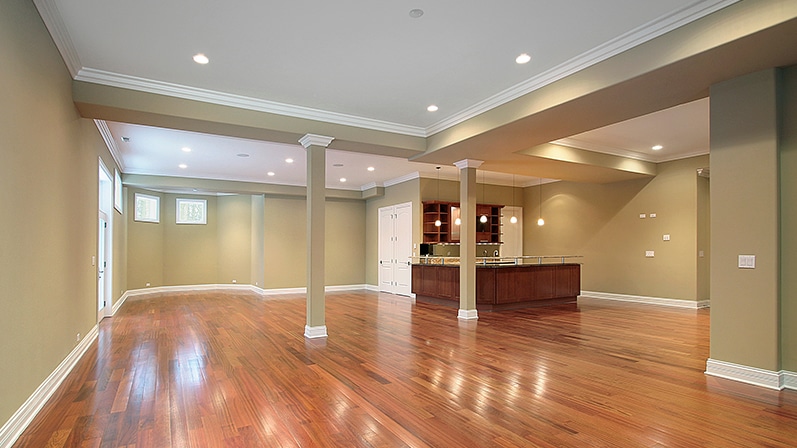Canada has introduced the Multigenerational Home Renovation Tax Credit for the 2023 and subsequent taxation years. This Multigenerational Home Renovation Tax Credit is a credit to assist individuals who have renovated an eligible home to create a legal secondary suite to be used by a senior or adult who is eligible for the disability tax credit to live with their relative. If you’re considering building a secondary suite for your senior parents or family members living with a disability, this tax credit is a fantastic incentive.

What is Canada’s Multigenerational Home Renovation Tax Credit
The Multigenerational Home Renovation Tax Credit allows eligible homeowners to claim a tax credit valued up to 15% of the cost of the renovation up to a maximum of 15% of $50,000. The Multigenerational Home Renovation Tax Credit allows homeowners to support their senior family members or family members living with disabilities. Legal secondary suites can be costly, so having a tax credit is a great way to alleviate the costs and ensure families of different generations can live together comfortably.
The Multigenerational Home Renovation Tax Credit helps reduce the need for senior housing and supportive housing for families who are capable of living on their own, but they might need a little extra help. This tax credit helps families support each other while still giving homeowners a tax break.
What is a Tax Credit?
A tax credit is applied to your taxes owed. Tax credits are incentives that allow you to apply the amount of credit you’ve earned to the taxes you owe. For example, if your brand new garage suite cost $100,000 to build, you could earn a tax credit of $7500. This means if at tax time you’re doing your taxes and have a balance owing of $7500 or less, you would owe nothing.

What homes qualify for the Multigenerational Home Renovation Tax Credit?
According to the Government of Canada, an eligible dwelling is a housing unit located in Canada that is owned by the qualifying individual at any time in the renovation period taxation year, and the homeowner must intend to primarily reside at that home within 12 months after the renovation period.
A qualifying secondary unit for this Multigenerational Home Renovation Tax Credit is a self-contained housing unit with a private entrance, kitchen, bathroom and sleeping area. This can be newly constructed or a renovated existing space that did not meet requirements to be considered a secondary dwelling unit.
Your new construction homes that have the development of a secondary suite (such as a basement suite or garden suite) may be eligible for this Multigenerational Home Renovation Tax Credit! If you’re looking to build a new home in Maple Crest and are considering a secondary suite, or your new home has started construction this year, you should speak with an accountant to see if your home qualifies for this tax credit!
Who Benefits from the Multigenerational Home Tax Credit?

There are many benefits to this tax credit. Homeowners (the qualifying relation) who are building a suite for their family members will receive a sizable tax credit, and qualifying individuals get to enjoy the comfort and safety of living with their family members. Qualifying individuals for the Multigenerational Home Tax Credit are seniors over 65 years old or adults 18+ who qualify for a disability tax credit. In order to be a qualifying relation of a qualifying individuals, homeowners need to be at least 18 years old and be the parent, grandparent, child, grandchild, brother, sister, aunt, uncle, niece or nephew of the qualifying individual or the qualifying individual’s cohabiting spouse or common-law partner.
What Expenses Qualify Under the Multigenerational Home Renovation Tax Credit?
The tax credit only applies to the costs of the actual renovation or construction of the secondary suite. This included the complete costs of the labour and materials for a newly constructed or renovated unit that meets the government requirements of a secondary suite. Labour and materials include cost of labour accrued by yourself or a professional, building materials, finishes, equipment costs, and permits – so long as receipts are supplied. You are not able to claim the cost of decorations, landscaping, interest fees, routine maintenance costs, or appliances and security devices. The only expenses that qualify for the multigenerational home renovation tax credit are the costs of the building or renovation itself.

Building a Multigenerational Home in Maple Crest
Maple Crest is an ideal community for multigenerational living! If you’re looking to build a multigenerational home that can help you and your family live together but with separate units, talk to your builder about building a legal basement or garden suite!
It’s also a good idea to talk to your accountant to see if your new home qualifies for the Multigenerational Home Renovation Tax Credit! Thank you to Gallo LLP for providing insight into this new tax credit. Gallo LLP is a local accounting firm with locations in Sherwood Park and Edmonton.
FAQ About Canada’s Multigenerational Home Renovation Tax Credit
1. Who can claim the Multigenerational Home Renovation Tax Credit?
The multigenerational home renovation tax credit can be claimed by any person who meets the eligibility criteria for the tax credit. Eligibility criteria includes being the homeowner of the property in question, living in the primary residence of the property within one year of the renovation being completed, and you must have a qualifying person live with you (someone you are related to who is over the age of 65, or they are over 18 and qualify for a disability tax credit).
2. What is a tax credit vs tax deduction?
The Multigenerational Home Renovation Tax Credit is different from a tax deduction. A tax credit is subtracted from your balance owing on your taxes (so if when you file your taxes and you owe money to the government, the tax credit will be applied and you may end up owing nothing). Tax deductions, on the other hand, reduce your taxable income which sometimes lead to a larger tax return. The Multigenerational Home Renovation Tax Credit is applied to your CRA account to reduce the tax owing to the government.
3. Can more than one person claim the Multigenerational Home Renovation Tax Credit?
In short, yes. If you have two eligible people (spouses who co-own the home, for example) they can both make claims for the Multigenerational Home Renovation Tax Credit. However, the limits for the tax credit (up to 15% of the renovation costs up to 15% of $50,000) is for the property as a whole. So if multiple people claim the Multigenerational Home Renovation Tax Credit, the combined claims cannot exceed the maximum. It is also important to note that each expense can only be claimed once.
4. How much can you claim under the Multigenerational Home Renovation Tax Credit?
The maximum amount you can claim for the Multigenerational Home Renovation Tax Credit is 15% of the renovation costs of the secondary residence, up to $50,000. This means that when you claim the Multigenerational Home Renovation Tax Credit you will receive up to $7500 in tax credit applied to your CRA account.
5. What can you claim under the Multigenerational Home Renovation Tax Credit?
The Multigenerational Home Renovation Tax Credit applies only to renovation construction costs. This means the cost of a newly constructed unit (such as a garage suite) or the cost to renovate your basement into a legal basement suite. The construction costs include professional labour costs (such as hiring an electrician), permits and engineering plans, building materials, equipment rentals, fixtures and finishes.
6. What doesn’t qualify under the Multigenerational Home Renovation Tax Credit?
There are a number of expenses associated with a renovation that do not apply to this tax credit. These include the cost of appliances, furniture, routine maintenance, financing costs, landscaping, housekeeping costs, or household “extras” (such as a wifi router or security system). If you are working with a vendor who does not have a GST/HST number, you will not be able to claim their services under the Multigenerational Home Renovation Tax Credit.
7. What is the purpose of the Multigenerational Home Renovation Tax Credit?
According to the federal government, the purpose of this tax credit is to provide financial support, make communities more livable, and to help bring families closer together with the ability to care for one another more effectively and affordably.
8. What do you need to support your tax credit claim?
In order to make a Multigenerational Home Renovation Tax Credit claim, you need supporting documentation for all eligible expenses. This includes information about each vendor with their invoice and GST number, complete description of goods and services, dates when the work/materials were delivered, as well as proof of payment.
9. Do Maple Crest builders qualify under the Multigenerational Home Renovation Tax Credit?
All Maple Crest builders are qualified workers as they have GST/HST numbers. As large, legitimate businesses, working with a Maple Crest builder to perform the development of a secondary suite that qualifies for the Multigenerational Home Renovation Tax Credit makes things easier. Our builders can provide you with all necessary information when requested!


